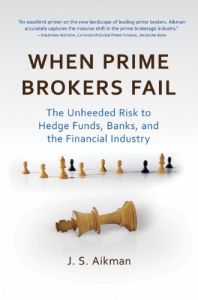Join getAbstract to access the summary!

Join getAbstract to access the summary!
J. S. Aikman
When Prime Brokers Fail
The Unheeded Risk to Hedge Funds, Banks, and the Financial Industry
Bloomberg Press, 2010
What's inside?
Take a look inside the secretive, largely unreported world of prime brokerage.
Recommendation
Former investment banker J. S. Aikman has written an advanced textbook explaining the detailed, complex role prime brokers play in the global financial markets. Largely unknown to even sophisticated investors, prime brokers provide the services hedge funds need, including financing, trading, research, securities lending, trade execution and consulting. When Lehman Brothers collapsed in 2008, its prime brokerage business’s legal and operational entanglements deepened the global financial crisis and shook hedge funds and other prime brokers worldwide. While esoteric, prime brokerage plays a huge role in global money management and certainly warrants more of this kind of professional scrutiny. getAbstract recommends this comprehensive insider’s guide to finance executives and investors who want to know more about the wizard behind the hedge fund curtain.
Summary
About the Author
Management consultant and attorney J.S. Aikman lectures on finance at the University of Toronto. He was formerly a vice president of an investment bank in London.

















Comment on this summary